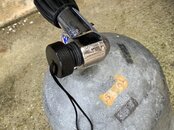I just purchased a DIN regulator (first time owner of one). I have a few questions:
1) Does the external O-ring that seals the first stage to the tank valve need to be lubricated?
2) How does one safely remove the O-ring for lubrication or replacement? Will a pick work?
3) I know that my O-ring is a size 112. Is this a common size in s Save-A-Dive kit or should I just buy a few extras?
4) How do you other DIN reg owners remember the dust cap? I understand I can put it in my dry bag while I'm diving, but let's say I'm diving with a full-service operation that handles my gear...I guess I will need to either attach it or breakdown my gear myself which is not a problem at all.
Thanks!
1) Does the external O-ring that seals the first stage to the tank valve need to be lubricated?
2) How does one safely remove the O-ring for lubrication or replacement? Will a pick work?
3) I know that my O-ring is a size 112. Is this a common size in s Save-A-Dive kit or should I just buy a few extras?
4) How do you other DIN reg owners remember the dust cap? I understand I can put it in my dry bag while I'm diving, but let's say I'm diving with a full-service operation that handles my gear...I guess I will need to either attach it or breakdown my gear myself which is not a problem at all.
Thanks!




